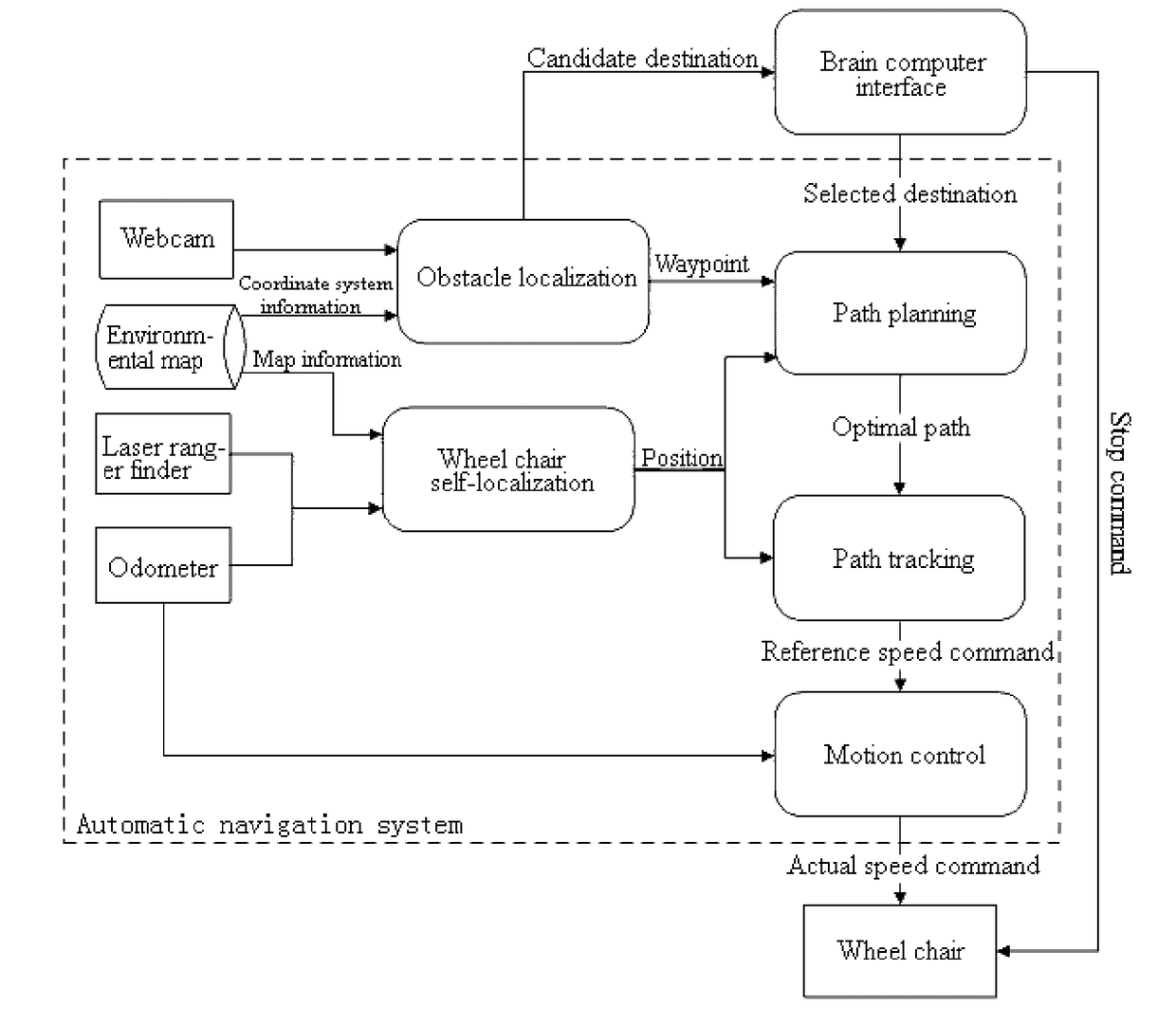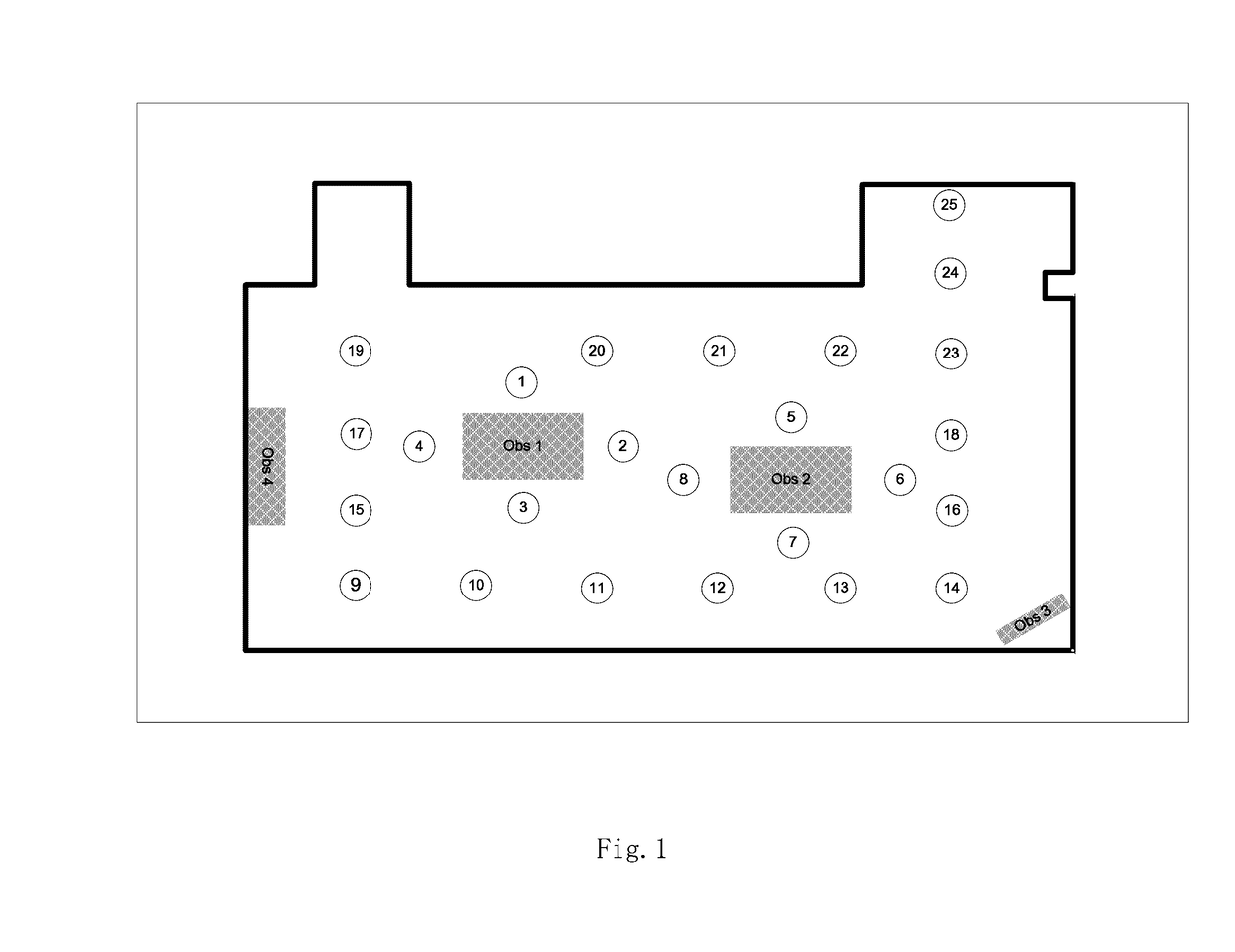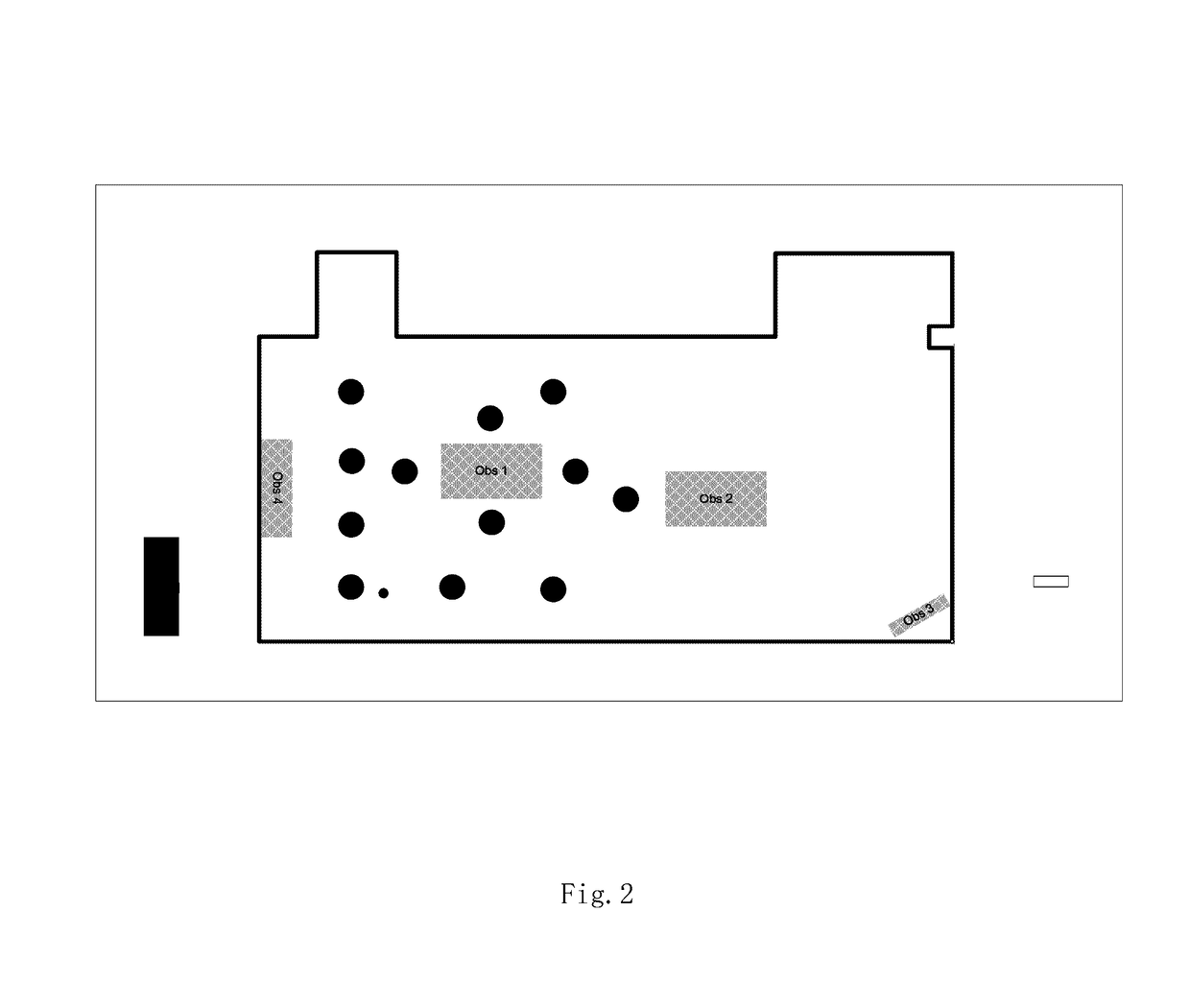Intelligent wheel chair control method based on brain computer interface and automatic driving technology
a brain computer interface and intelligent technology, applied in the field of artificial intelligence, can solve the problems of losing the motor function, unable to control such wheel chairs, and unable to operate traditional electric wheel chairs, so as to reduce substantially alleviate the mental burden of users
- Summary
- Abstract
- Description
- Claims
- Application Information
AI Technical Summary
Benefits of technology
Problems solved by technology
Method used
Image
Examples
first embodiment
[0062]As shown in FIGS. 1, 2, 3, 4 and 5, an intelligent wheel chair control method based on a brain computer interface and an automatic driving technology comprises the sequential steps:
[0063]S1. acquiring pictures about current environment information from each webcam which is fixed on a wall face, and using an image processing method to localize obstacles according to the acquired pictures; the obstacle localization is performed by the sequential steps:
[0064](1) using a threshold segmentation method to separate the obstacles from the floor in the picture;
[0065](2) removing noises by means of a morphological opening operation, and rebuilding the regions removed in the opening operation by means of a morphological closing operation so as to obtain the contour of each segmented region;
[0066](3) removing the relatively small contours to further remove the noises, and then approximating the remaining contours with convex hulls;
[0067](4) mapping the vertexes of the convex hulls onto th...
second embodiment
[0099]The invention will now be described by way of more specific embodiments:
[0100]EEG signals are collected via an electrode cap worn by the user;
[0101]the collected EEG data is transmitted to an on-board computer to be processed in real time; meanwhile, a SICK LMS 111 laser range finder fixed in the front of the wheel chair transmits data to the on-board computer through a TCP network in real time for self-localization of the wheel chair; odometers attached to the left and right wheels of the wheel chair transmit real-time data through serial ports, which is converted into a linear velocity and angular velocity as the feedback data of a PID controller to adjust the current velocity of the wheel chair in real time;
[0102]the webcams fixed on the wall face of the room are connected to the on-board computer through a wireless network, the on-board computer controls the webcams whether to transmit the current image data and perform image processing, and the obstacles in the room are s...
PUM
 Login to View More
Login to View More Abstract
Description
Claims
Application Information
 Login to View More
Login to View More - R&D
- Intellectual Property
- Life Sciences
- Materials
- Tech Scout
- Unparalleled Data Quality
- Higher Quality Content
- 60% Fewer Hallucinations
Browse by: Latest US Patents, China's latest patents, Technical Efficacy Thesaurus, Application Domain, Technology Topic, Popular Technical Reports.
© 2025 PatSnap. All rights reserved.Legal|Privacy policy|Modern Slavery Act Transparency Statement|Sitemap|About US| Contact US: help@patsnap.com



